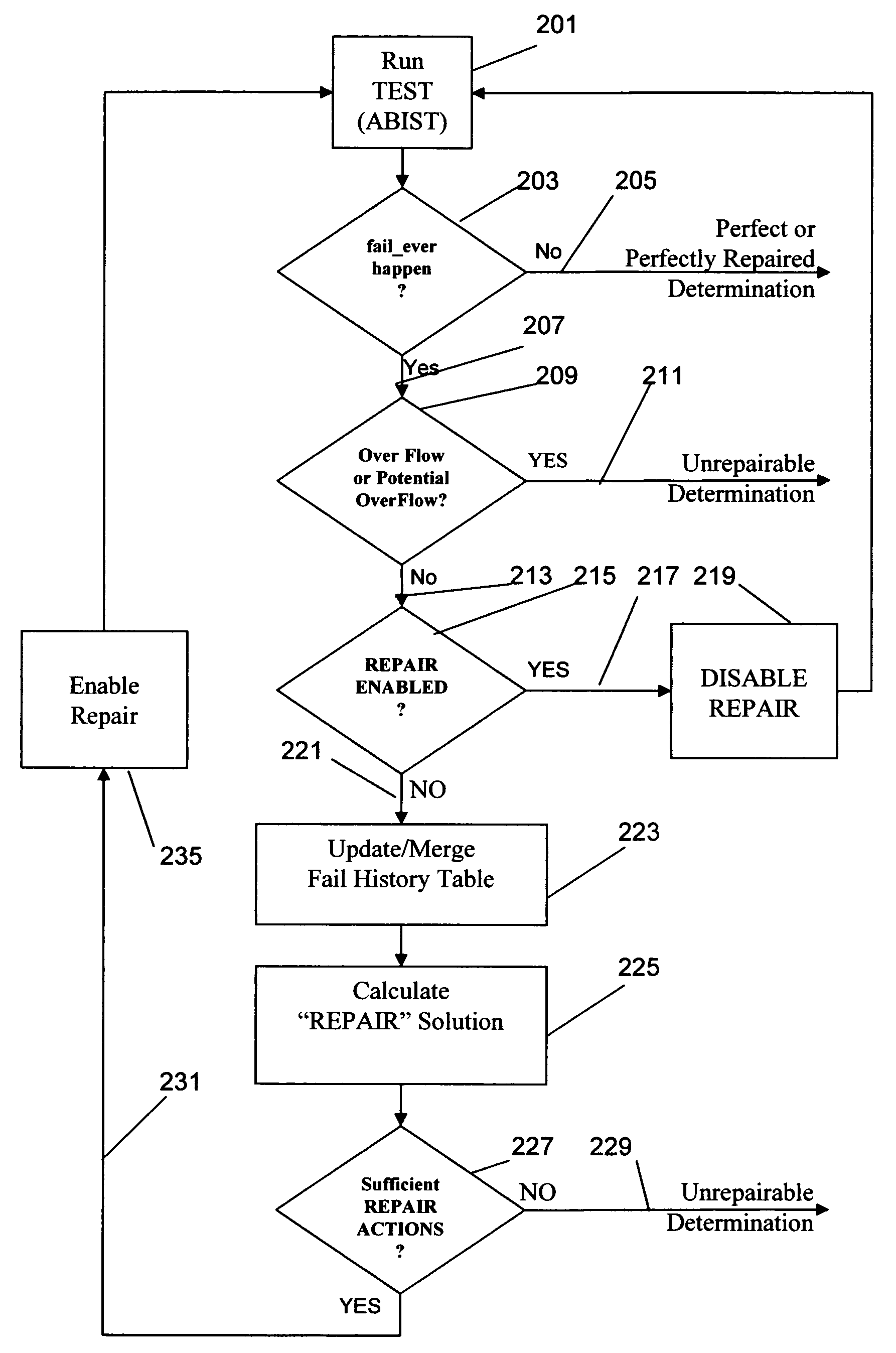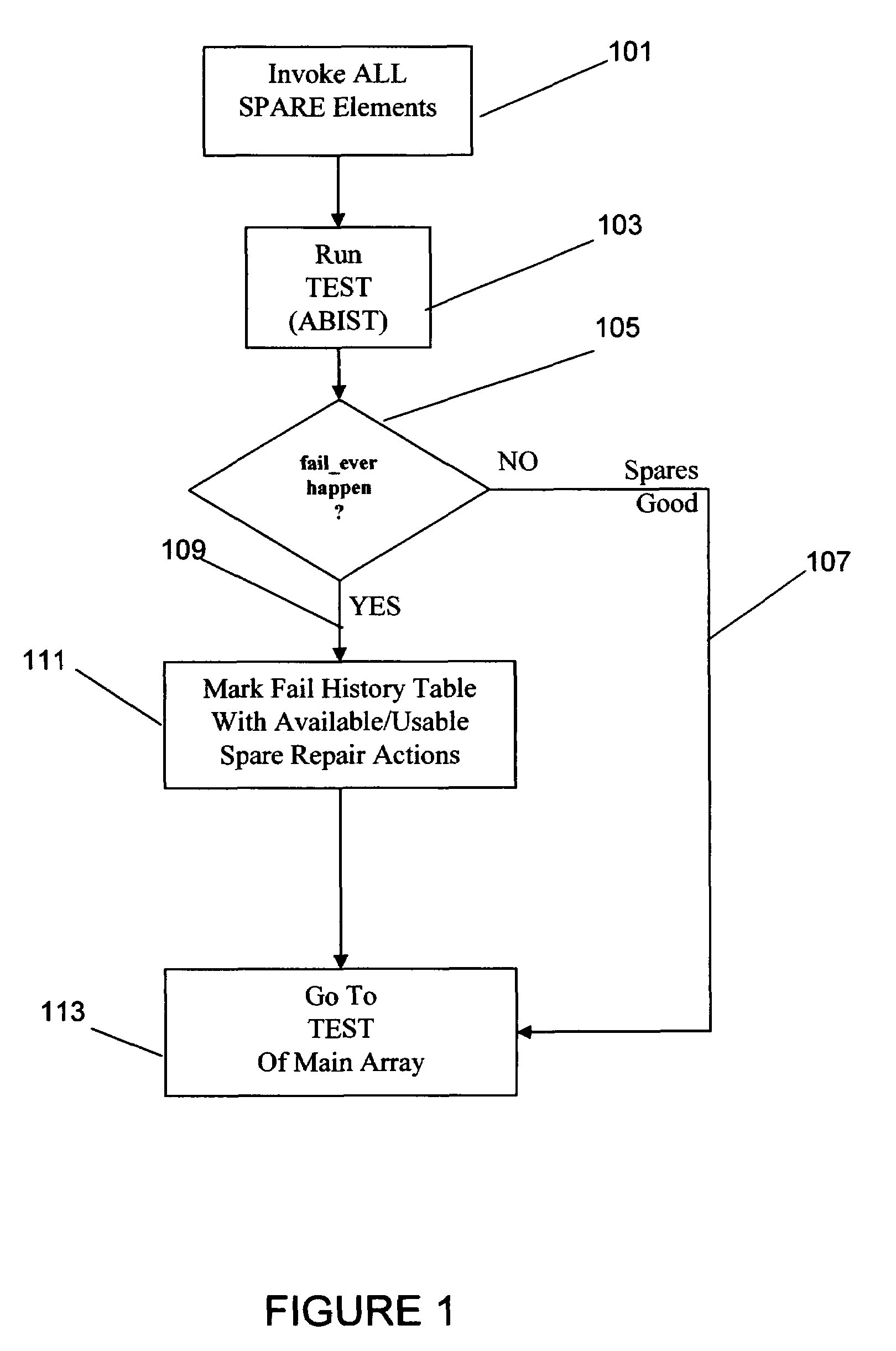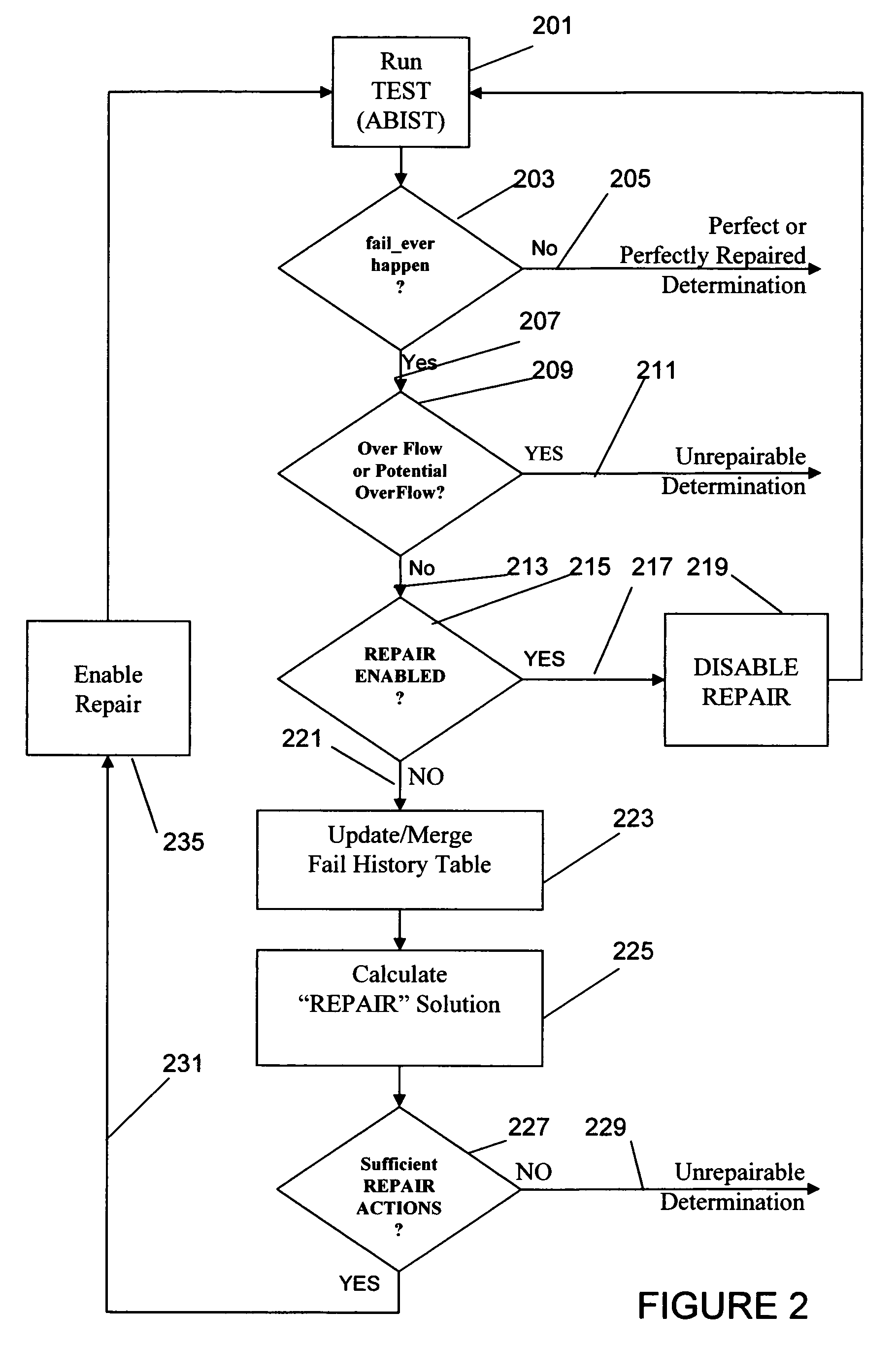Efficient method of test and soft repair of SRAM with redundancy
a technology redundancy, applied in the direction of digital storage, instruments, measurement devices, etc., can solve the problems of producer cost risk associated with continued processing of the die, the complexity of the support for two-dimensional redundancy allocation of sram memory array,
- Summary
- Abstract
- Description
- Claims
- Application Information
AI Technical Summary
Benefits of technology
Problems solved by technology
Method used
Image
Examples
Embodiment Construction
[0018]One preferred embodiment of our invention will be described herein with relation to, but not restricted to, existing ABIST implementations, such as those described in patents which are mentioned below and incorporated herein by reference, including the patents of Huott et al., U.S. Pat. No. 5,633,877 entitled “Programmable Built-In Self-Test Controller for Arrays”, and of Dreibelbis et al., U.S. Pat. No. 5,961,653 entitled “Processor based BIST for an embedded memory” issued Oct. 5, 1999, and the patent of Koch et al, U.S. Pat. No. 5,535,164 for a BIST tester for multiple memories and will further reference this as the ABIST test engine.
[0019]This preferred embodiment of our proposed methodology, begins with the complete substitution or exposure of the redundant or spare elements provided within the SRAM memory array, as depicted in FIG. 1 for test. This can be accomplished based on the provisions of the architecture of the SRAM memory array, either accessed as part of additio...
PUM
 Login to View More
Login to View More Abstract
Description
Claims
Application Information
 Login to View More
Login to View More - R&D
- Intellectual Property
- Life Sciences
- Materials
- Tech Scout
- Unparalleled Data Quality
- Higher Quality Content
- 60% Fewer Hallucinations
Browse by: Latest US Patents, China's latest patents, Technical Efficacy Thesaurus, Application Domain, Technology Topic, Popular Technical Reports.
© 2025 PatSnap. All rights reserved.Legal|Privacy policy|Modern Slavery Act Transparency Statement|Sitemap|About US| Contact US: help@patsnap.com



